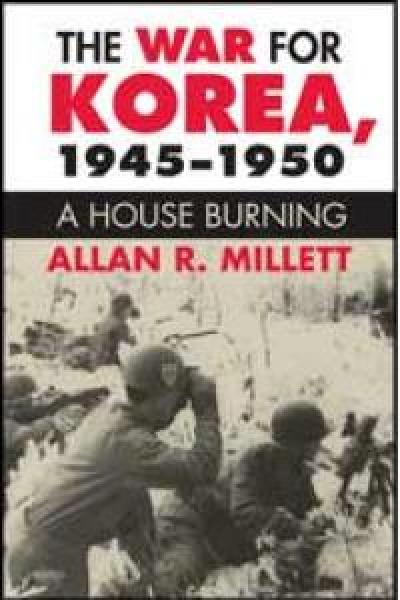The War for Korea, 1945–1950: A House Burning

Millett, Allan R.
When the major powers sent troops to the Korean peninsula in June of 1950, it supposedly marked the start of one of the last century’s bloodiest conflicts. Allan Millett, however, reveals that the Korean War actually began with partisan clashes two years earlier and had roots in the political history of Korea under Japanese rule, 1910–1945.
The first in a new two-volume history of the Korean War, Millett’s study offers the most comprehensive account of its causes and early military operations. Millett traces the war’s origins to the post-liberation conflict between two revolutionary movements, the Marxist-Leninists and the Nationalist-capitalists. With the U.S.-Soviet partition of Korea following World War II, each movement, now with foreign patrons, asserted its right to govern the peninsula, leading directly to the guerrilla warfare and terrorism in which more than 30,000 Koreans died. Millett argues that this civil strife, fought mostly in the South, was not so much the cause of the Korean War as its actual beginning.
Millett describes two revolutions locked in irreconcilable conflict, offering an even-handed treatment of both Communists and capitalists-nationalists. Neither movement was a model of democracy. He includes Korean, Chinese, and Russian perspectives on this era, provides the most complete account of the formation of the South Korean army, and offers new interpretations of the U.S. occupation of Korea, 1945–1948.
Millett’s history redefines the initial phase of the war in Asian terms. His book shows how both internal forces and international pressures converged to create the Korean War, a conflict that still shapes the politics of Asia.
“A superb, path-breaking, and highly revealing narrative of the Cold War’s first major ‘hot war.’”—Chen Jian, author of China’s Road to the Korean War
“Millett is one of the very best military historians writing today and his book far surpasses any other in describing and analyzing the military dimensions of events leading up to North Korea’s attack on South Korea in June 1950.”—William Stueck, author of The Korean War in World History
“Authoritative and compelling. . . . A must read for policy makers and all informed citizens interested in the fate of the Korean peninsula.”—James T. Laney, former U.S. ambassador to the Republic of Korea and coauthor of U.S. Foreign Policy toward North Korea: Next Steps
Investigators
Filters: 2005
